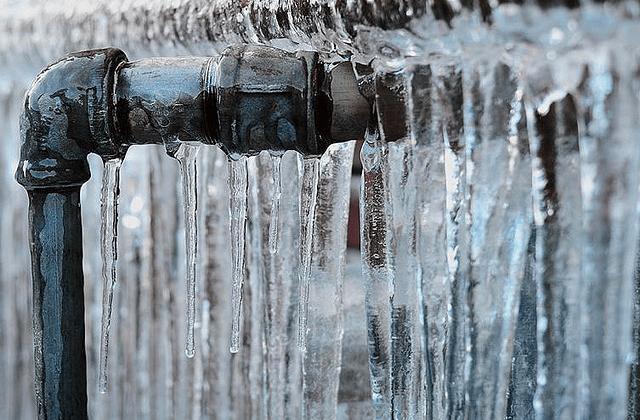Avoiding Pipes from Cold Weather: Top Strategies
Avoiding Pipes from Cold Weather: Top Strategies
Blog Article
They are making a few great points relating to Preventing and dealing with frozen pipes in general in this post followed below.

Winter can ruin your plumbing, specifically by freezing pipes. Right here's just how to prevent it from taking place and what to do if it does.
Introduction
As temperatures decline, the risk of icy pipelines increases, possibly causing pricey fixings and water damages. Recognizing how to stop frozen pipelines is important for home owners in cold climates.
Recognizing Icy Pipes
What creates pipelines to ice up?
Pipes freeze when exposed to temperatures listed below 32 ° F (0 ° C) for extended durations. As water inside the pipes ices up, it increases, putting pressure on the pipeline walls and potentially triggering them to rupture.
Threats and damages
Icy pipelines can cause water system disruptions, home damages, and expensive fixings. Ruptured pipes can flood homes and trigger considerable structural damage.
Indications of Frozen Water Lines
Determining frozen pipelines early can prevent them from breaking.
How to identify icy pipes
Seek lowered water circulation from faucets, unusual smells or sounds from pipelines, and visible frost on revealed pipes.
Prevention Tips
Shielding susceptible pipes
Wrap pipelines in insulation sleeves or make use of heat tape to safeguard them from freezing temperatures. Focus on pipes in unheated or exterior areas of the home.
Heating strategies
Keep interior areas sufficiently heated, specifically locations with pipes. Open up closet doors to allow warm air to circulate around pipes under sinks.
Shielding Exterior Plumbing
Yard hoses and exterior faucets
Detach and drain garden hose pipes prior to wintertime. Mount frost-proof spigots or cover outside taps with shielded caps.
What to Do If Your Pipelines Freeze
Immediate activities to take
If you believe frozen pipes, maintain taps open up to eliminate pressure as the ice thaws. Make use of a hairdryer or towels soaked in warm water to thaw pipes slowly.
Long-Term Solutions
Architectural adjustments
Consider rerouting pipelines far from exterior wall surfaces or unheated locations. Add added insulation to attics, basements, and crawl spaces.
Updating insulation
Invest in high-quality insulation for pipes, attics, and walls. Appropriate insulation helps keep constant temperatures and lowers the threat of icy pipes.
Conclusion
Stopping icy pipes requires aggressive measures and fast actions. By understanding the causes, indications, and safety nets, home owners can shield their pipes throughout winter.
5 Ways to Prevent Frozen Pipes
Drain Outdoor Faucets and Disconnect Hoses
First, close the shut-off valve that controls the flow of water in the pipe to your outdoor faucet. Then, head outside to disconnect and drain your hose and open the outdoor faucet to allow the water to completely drain out of the line. Turn off the faucet when done. Finally, head back to the shut-off valve and drain the remaining water inside the pipe into a bucket or container. Additionally, if you have a home irrigation system, you should consider hiring an expert to clear the system of water each year.
Insulate Pipes
One of the best and most cost-effective methods for preventing frozen water pipes is to wrap your pipes with insulation. This is especially important for areas in your home that aren’t exposed to heat, such as an attic. We suggest using foam sleeves, which can typically be found at your local hardware store.
Keep Heat Running at 65
Your pipes are located inside your walls, and the temperature there is much colder than the rest of the house. To prevent your pipes from freezing, The Insurance Information Institute suggests that you keep your home heated to at least 65 degrees, even when traveling. You may want to invest in smart devices that can keep an eye on the temperature in your home while you’re away.
Leave Water Dripping
Moving water — even a small trickle — can prevent ice from forming inside your pipes. When freezing temps are imminent, start a drip of water from all faucets that serve exposed pipes. Leaving a few faucets running will also help relieve pressure inside the pipes and help prevent a rupture if the water inside freezes.
Open Cupboard Doors
Warm your kitchen and bathroom pipes by opening cupboards and vanities. You should also leave your interior doors ajar to help warm air circulate evenly throughout your home.

Do you appreciate reading up on 6 Ways to Prevent Frozen Pipes? Post feedback further down. We'd be glad to listen to your ideas about this blog post. We hope that you come back again in the near future. I beg you take a moment to promote this article if you enjoyed it. We truly appreciate your readership.
Schedule Now! Report this page